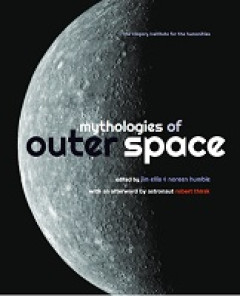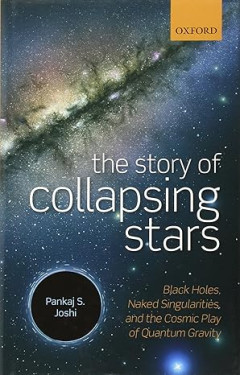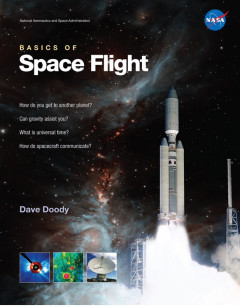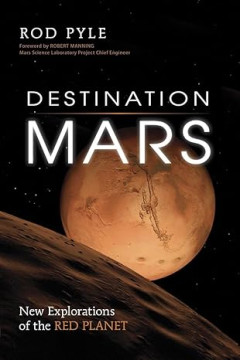Ditapis dengan

E-book Mythologies of Outer Space
Every culture and society has read stories in the night sky. From the careful attention of astronomers across all times and all parts of the world to the search for alien life, the stories found in the shapes of constellations to the expansive imaginings of science fiction, there has always been life up there, at the very least, for our imaginations. Mythologies of Outer Space brings together a…
- Edisi
- -
- ISBN/ISSN
- 9781773855875
- Deskripsi Fisik
- 217 halaman, ilus.
- Judul Seri
- -
- No. Panggil
- 704.9 ELL m

E-book The Story of Collapsing Stars: Black Holes, Naked Singularities, and t…
This book journeys into one of the most fascinating intellectual adventures of recent decades - understanding and exploring the final fate of massive collapsing stars in the universe. The issue is of great interest in fundamental physics and cosmology today, from both the perspective of gravitation theory and of modern astrophysical observations. This is a revolution in the making and may be in…
- Edisi
- -
- ISBN/ISSN
- 9780199686766
- Deskripsi Fisik
- 240 halaman, ilus.
- Judul Seri
- -
- No. Panggil
- 523.01 JOS t

E-book Basics of Space Flight
Newton's first law describes how, once in motion, planets remain in motion. What it does not do is explain how the planets are observed to move in nearly circular orbits rather than straight lines. Enter the second law. To move in a curved path, a planet must have an acceleration toward the center of the circle. This is called centripetal acceleration and is supplied by the mutual gravitational…
- Edisi
- -
- ISBN/ISSN
- 9780615476018
- Deskripsi Fisik
- 311 halaman, ilus.
- Judul Seri
- -
- No. Panggil
- 629.41 DOO b

E-book Destination Mars: New Explorations of the Red Planet
In the next decade, NASA, by itself and in collaboration with the European Space Agency, is planning a minimum of four separate missions to Mars. Clearly, exciting times are ahead for Mars exploration. This is an insider's look into the amazing projects now being developed here and abroad to visit the legendary red planet. Drawing on his contacts at NASA and the Jet Propulsion Laboratory, the a…
- Edisi
- -
- ISBN/ISSN
- 9781616145897
- Deskripsi Fisik
- 296 halaman, ilus.
- Judul Seri
- -
- No. Panggil
- 629.43 PYL d
E-book Empty Spaces : Perspectives on Emptiness in Modern History
Emptiness is a challenging concept: slippery in definition and elastic in meaning. It implies a total lack of content: people, buildings, objects or markings on a map. In the abstract, emptiness equals nothingness, a perfect void. Yet when one thinks of places on the globe that one might associate with being empty – the Gobi or Sahara deserts, t…
- Edisi
- -
- ISBN/ISSN
- 9781909646520
- Deskripsi Fisik
- 230 hlm
- Judul Seri
- -
- No. Panggil
- 114 JAM e
E-book Space: A Visual Encyclopedia
Featuring a wealth of never-before-published NASA photographs, charts, stories, and contributions by NASA astronauts and experts, A Visual Encyclopedia is a comprehensive exploration of space from our nearest planets and stars to far-off galaxies. Supports the Common Core State Standards.
- Edisi
- -
- ISBN/ISSN
- 9780756662776
- Deskripsi Fisik
- 258 halaman, ilus.
- Judul Seri
- -
- No. Panggil
- 523.4 BON s

E-Book Encyclopedia of Space
Blast off into space to discover the galaxies and beyond with the new edition of this out-of-this-world reference. Send your child on an amazing journey into space. They'll see the Hubble telescope orbiting the Earth, discover the birth of our solar system and follow the search for life on Mars. Packed with practical tips for the amateur astronomer, spectacular images from space, detailed chart…
- Edisi
- -
- ISBN/ISSN
- 9780756651572
- Deskripsi Fisik
- 304 halaman
- Judul Seri
- -
- No. Panggil
- 523.1 COU e
E-book Artemis Plan : NASA's Lunar Exploration Program Overview
Sending human explorers 250,000 miles to the Moon, then 140 million miles to Mars, requires a bold vision, effective program management, funding for modern systems development and mission operations, and support from all corners of our great nation as well as our partners across the globe. NASA has been fine-tuning the plan to achieve that bold vision since the president called on the agency in…
- Edisi
- -
- ISBN/ISSN
- -
- Deskripsi Fisik
- 74 hlm
- Judul Seri
- -
- No. Panggil
- 629.41 NAS a
E-book An Introduction to the Philosophy of Time and Space
With respect to time, some of the basic relations are simultaneous, before, and between. Whether this list is essentially complete, or perhaps redundant in some respects, are questions that we shall not try to answer at this point. (The answers may seem obvious to the reader now, but this impression may change as we follow the history of the problem.) At least, a theory of time must give an acc…
- Edisi
- -
- ISBN/ISSN
- 9780231061339
- Deskripsi Fisik
- 246 hlm
- Judul Seri
- -
- No. Panggil
- 114 FRA a
E-book International Space Station Benefits for Humanity
Welcome as we share the successes of the International Space Station (ISS) in this third edition of the International Space Station Benefits for Humanity. The ISS is a unique scientific platform that has enabled more than 3,600 researchers in 106 countries and areas to conduct more than 2,500 experiments in microgravity through February 2018—and the research continues. Since November 2, 2000,…
- Edisi
- 3rd ed.
- ISBN/ISSN
- -
- Deskripsi Fisik
- 236 hlm
- Judul Seri
- -
- No. Panggil
- 387.8 ROB i
E-book Public Space in Transition
This chapter includes a review of the international literature on public space,and it is divided into five sections. First, the definition and dimensions ofpublic space are reviewed to introduce the research topic and determine theboundaries of the research. In the second section, the changing nature ofpublic space is described through an analysis of the effects of societal shifts(e.g., economi…
- Edisi
- -
- ISBN/ISSN
- 9783839462324
- Deskripsi Fisik
- 203 hlm
- Judul Seri
- -
- No. Panggil
- 307.76 DAH p
 Karya Umum
Karya Umum  Filsafat
Filsafat  Agama
Agama  Ilmu-ilmu Sosial
Ilmu-ilmu Sosial  Bahasa
Bahasa  Ilmu-ilmu Murni
Ilmu-ilmu Murni  Ilmu-ilmu Terapan
Ilmu-ilmu Terapan  Kesenian, Hiburan, dan Olahraga
Kesenian, Hiburan, dan Olahraga  Kesusastraan
Kesusastraan  Geografi dan Sejarah
Geografi dan Sejarah